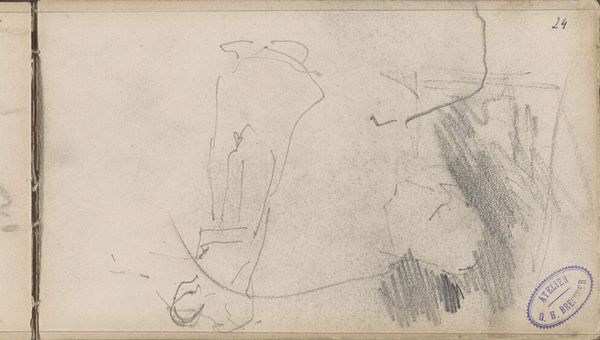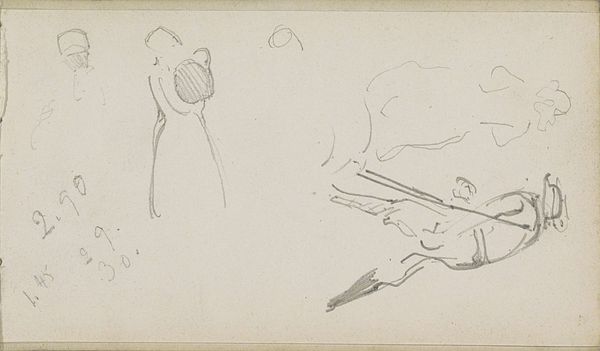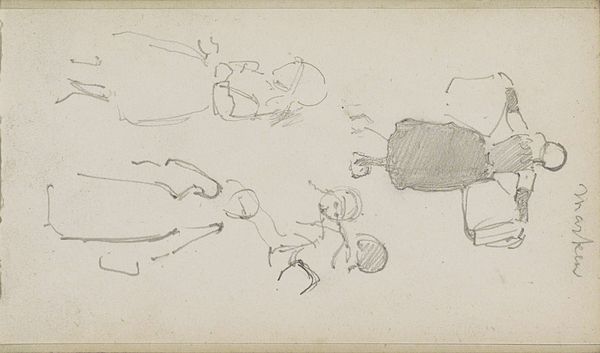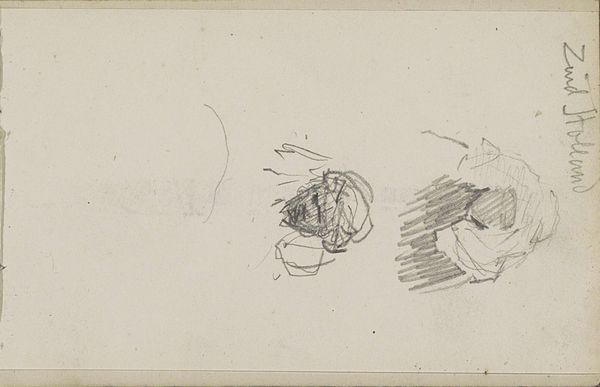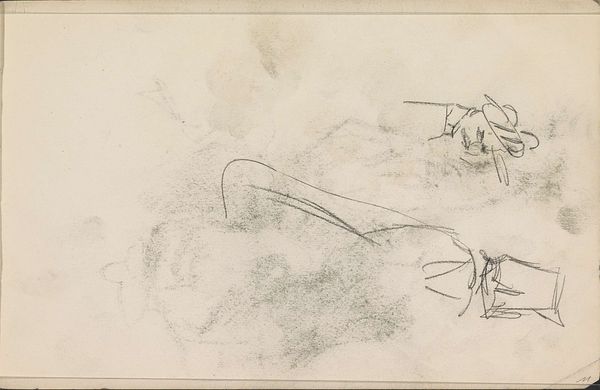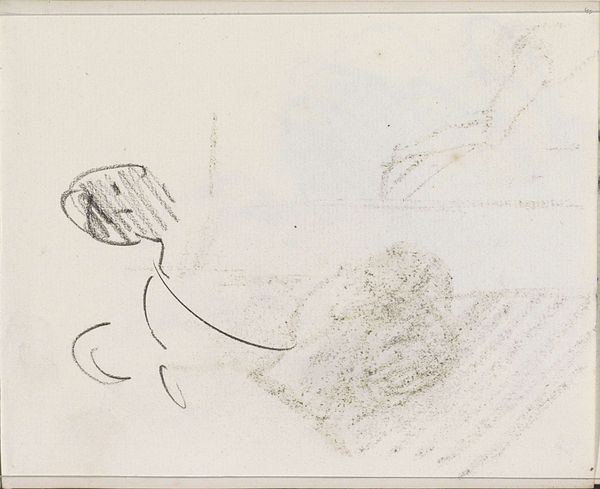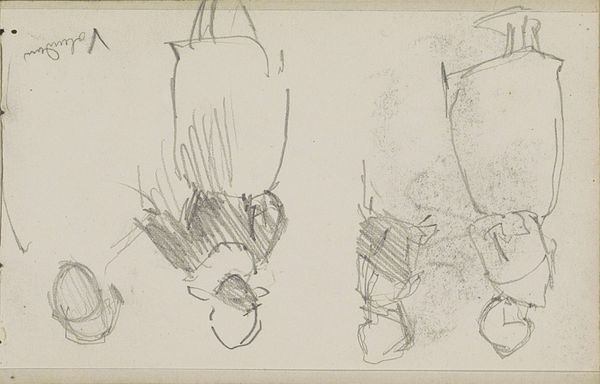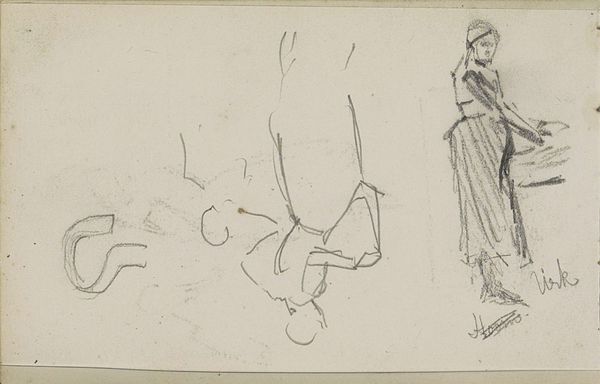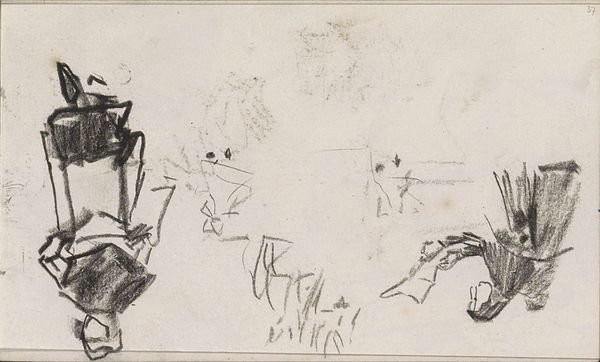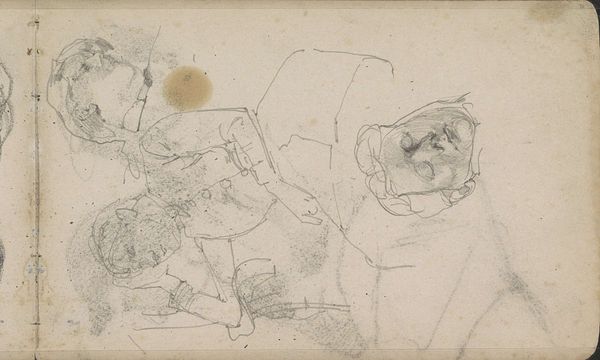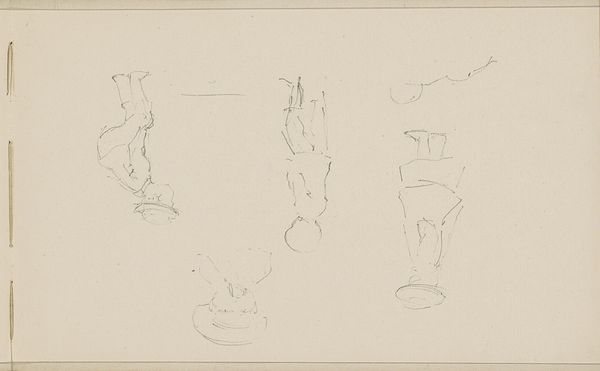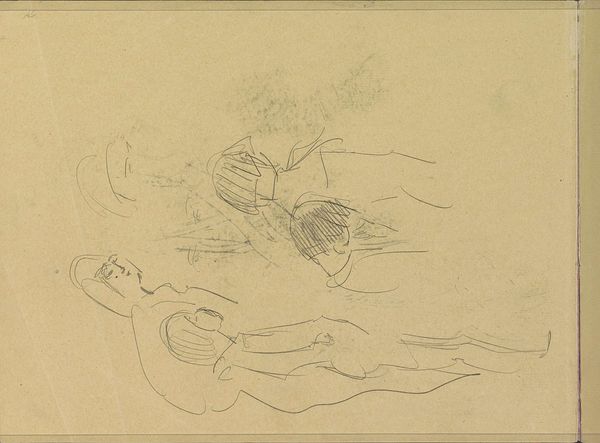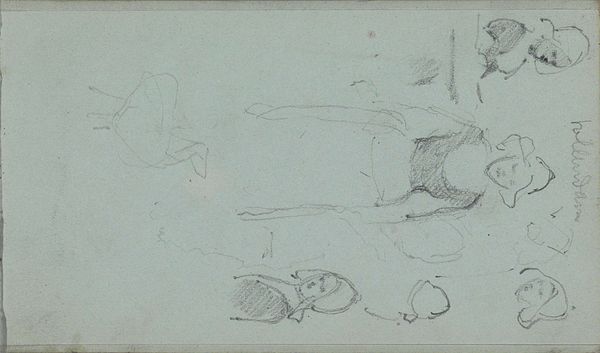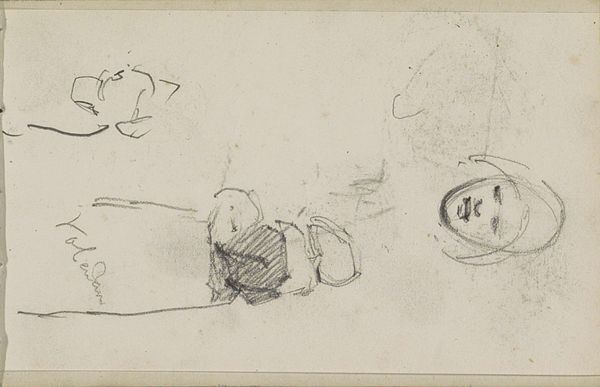
drawing, paper, pencil
#
portrait
#
drawing
#
amateur sketch
#
toned paper
#
light pencil work
#
quirky sketch
#
impressionism
#
pencil sketch
#
incomplete sketchy
#
paper
#
personal sketchbook
#
sketchwork
#
pencil
#
sketchbook drawing
#
genre-painting
#
sketchbook art
#
realism
Copyright: Rijks Museum: Open Domain
Curator: Looking at George Clausen’s "Vrouwen in Marker klederdracht" from 1875, done with pencil on paper, what’s your initial reaction? Editor: The first thing that strikes me is how raw it feels, like a snapshot directly from a sketchbook. It feels unfinished, which makes it all the more intimate, somehow. Curator: Precisely. This isn't a polished, presentational piece, but more like a working study. Notice the toned paper – that choice would influence the behaviour of the graphite and subsequent rendering, lending an overall softness to the image. This reflects the impressionistic movement where emphasis was given on how the materials themselves create impact. What do you think about Clausen focusing on depicting working-class women? Editor: It tells a fascinating story about art institutions then, doesn't it? The establishment of art schools that promoted "en plein air" allowed access for artists to depict these images. These studies capture a shift toward representing ordinary life, documenting, perhaps romanticizing, the labor of these women in their traditional costumes. It is interesting seeing how art portrays those outside the traditional purview. Curator: That social lens is compelling. But thinking about the material realities, consider the role of readily available and relatively inexpensive pencils. Were these the only readily-available material to record the women or did Clausen consciously make an active choice that this was how he would use to sketch. I think considering the material aspect elevates the understanding to the circumstances and deliberate artistry involved. Editor: I agree it gives a deeper understanding on why they are represented. Also this art piece will go through so many hands, the pencil becoming more or less faded with each transit from its conception. Curator: True. Seeing the marks age alongside the memory that this sketch documents. What a layered reflection of making and time. Editor: Yes, considering the cultural context along with material components helps create a much better perspective and how these artworks make their ways into art historical discussions.
Comments
No comments
Be the first to comment and join the conversation on the ultimate creative platform.
